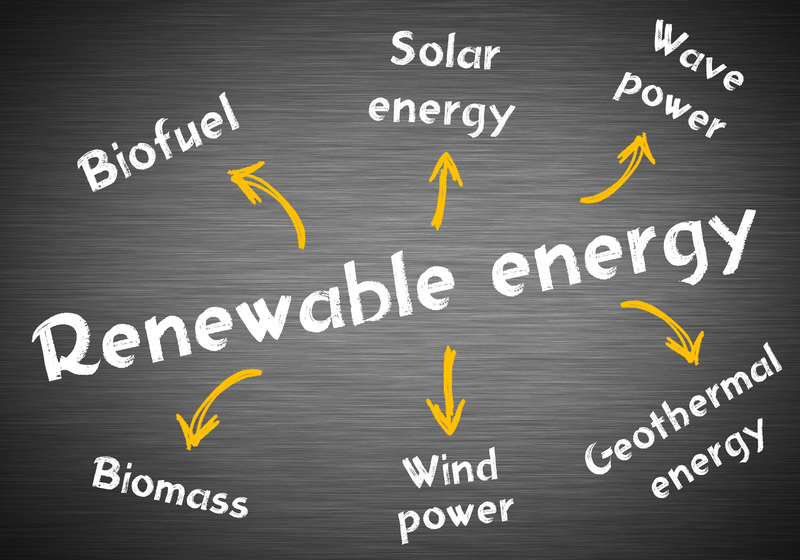The Environmental Impact of Disposing Cookware and How to Lessen It
Cookware is a staple in every household. From pots and pans to baking sheets and utensils, these essential kitchen items help us prepare daily meals and bring families together. However, as cookware ages or becomes damaged, it often ends up discarded--adding to growing environmental concerns. Understanding the environmental impact of disposing cookware and learning how to lessen it is crucial for ensuring a sustainable future. In this comprehensive article, we'll examine the environmental issues related to old cookware disposal, explore different cookware materials, and provide actionable solutions to reduce environmental harm.
Understanding the Environmental Footprint of Old Cookware Disposal
When a piece of cookware reaches the end of its useful lifecycle, its disposal can contribute to several negative environmental effects. The magnitude of this impact largely depends on the cookware's composition and the disposal method chosen. Let's delve into the environmental consequences of throwing away cookware and identify critical areas of concern.
Common Materials Used in Cookware
- Stainless Steel: Durable, recyclable, but energy-intensive to produce.
- Aluminum: Lightweight, recyclable, but often coated with non-recyclable materials.
- Cast Iron: Highly durable, usually recyclable, but heavy to transport.
- Copper: Highly recyclable, but extraction and refining are environmentally taxing.
- Nonstick (Teflon/ceramic coated): Can contain chemicals (PTFE, PFOA), usually not recyclable.
- Glass and Ceramic: Not recyclable in most curbside programs, can persist in landfills indefinitely.
Recognizing the variation in these materials is crucial for sustainable cookware disposal. Many consumer-grade products combine several materials, complicating the recycling process. For example, nonstick pans feature metal bodies with synthetic polymer coatings that make recycling challenging.
The Environmental Hazards of Landfilling Cookware
When unwanted cookware is dumped into landfills, several environmental issues arise:
- Resource Waste: Discarded metals, ceramics, and plastics represent lost resources that required significant energy and raw material extraction to create.
- Landfill Overcrowding: Cookware doesn't break down easily, occupying valuable landfill space for decades or even centuries.
- Chemical Leakage: Non-stick coatings and some metal treatments can leach toxic compounds (e.g., perfluorinated chemicals) into soil and groundwater.
- Greenhouse Gas Emissions: Manufacturing replacement products and increased landfill waste both contribute to climate change.

Assessing the Life Cycle of Cookware Materials
Cookware's environmental impact starts well before disposal. The manufacturing process of pots, pans, and utensils involves mining raw materials, refining, energy consumption, and more. A lifecycle perspective offers better insights into reducing cookware's environmental footprint.
- Production Phase: Mining and refining metals release greenhouse gases and pollutants. Energy-intensive kilns or smelters emit significant carbon dioxide.
- Usage Phase: Durable cookware reduces frequency of disposal. Materials like cast iron last generations if properly maintained.
- End-of-Life Phase: Disposal or recycling. This is where consumer choices have a direct impact.
Eco-friendly practices at each of these phases can significantly reduce environmental harm associated with cookware.
Recycling and Repurposing: Better Options Than Landfills
One of the most effective ways to reduce the environmental effects of discarded cookware is to explore alternatives to landfill disposal. Recycling, donation, upcycling, and repurposing are all practical options that can help lessen the ecological burden.
Recycling Your Old Cookware
- Metal Cookware Recycling: Facilities accept ferrous (iron-based) and non-ferrous (aluminum/copper) metals. Remove non-metal handles, lids, and nonstick coatings if possible.
- Nonstick Cookware: Difficult to recycle due to coatings. Some manufacturers offer take-back programs for nonstick pans.
- Glass and Ceramic: Usually not accepted at curbside recycling centers. Specialized facilities or creative reuse are better options.
Be sure to contact your local recycling centers to verify what materials they accept. In certain regions, scrap metal yards may take old cookware if it is free from non-metal components and excessive residue.
Donation: Extending Cookware's Life
- Charity Shops and Shelters: Donate gently-used cookware to organizations supporting those in need.
- Community Kitchens: Refugee kitchens, food banks, and nonprofits often welcome surplus cookware for food preparation.
- Online Marketplaces: Offer cookware for free or low price to individuals on local exchange groups or classifieds.
Donation not only diverts cookware from landfills, but also supports others in your community. If an item is still functional, this is an excellent first step in environmental responsibility before recycling or disposal.
Creative Repurposing and Upcycling
If recycling and donation aren't feasible, upcycling cookware into new uses can be both fun and eco-friendly:
- Turn old pots into planters or garden containers.
- Use cast iron pans as rustic serving trays or wall decor.
- Bakeware can become organizational bins or desk trays.
- Handles and lids can be turned into hooks or craft projects.
Such creative repurposing ensures that cookware continues to provide value and utility, even after it is no longer suitable for food preparation.
Environmentally Friendly Cookware Choices for the Future
Making smarter choices at the time of purchase can significantly reduce environmental harm in the long run. Eco-conscious consumers can be proactive about sustainability by considering the following factors when choosing cookware:
- Longevity: High-quality cookware (such as stainless steel or cast iron) lasts longer, reducing waste.
- Recyclability: Choose materials that are widely recyclable at end-of-life, like pure stainless steel or uncoated aluminum.
- Repairability: Opt for brands offering replacement parts or repair services, extending the useful lifespan of your cookware.
- Non-Toxic Materials: Avoid products with harmful chemicals or coatings that can contaminate landfills or recycling streams.
By selecting eco-friendly cookware, you're already contributing to lessening environmental issues downstream.
Best Practices for Disposing Old Cookware Responsibly
So, what specific steps can you take to lessen the environmental impact of disposing cookware? Here's a checklist to help you ensure your unwanted kitchen items are dealt with in the most sustainable manner possible:
- Assess the Condition: Can it be repaired, repurposed, or donated?
- Separate Components: Remove plastic, glass, or wooden parts to optimize recyclability.
- Clean Thoroughly: Remove food residue--a clean item has a better chance of being accepted by recyclers.
- Contact Local Centers: Research recycling centers, scrap yards, or special collection events for cookware disposal.
- Utilize Manufacturer Programs: Some brands offer take-back or recycling initiatives for their products. Check the brand's sustainability policies.
Making these small, informed choices goes a long way toward reducing landfill waste and encouraging more sustainable product lifecycles.
The Bigger Picture: Policy and Industry Solutions
While individual responsibility is crucial, broader policy initiatives and industry innovations play a key role in mitigating the environmental consequences of cookware disposal. Support for these efforts can accelerate systemic change:
Government Regulations and Producer Responsibility
- Extended Producer Responsibility (EPR): Policies that require manufacturers to manage the end-of-life for their products, encouraging design for recyclability and take-back schemes.
- Landfill Restrictions: Some regions prohibit or restrict the landfilling of metal kitchenware, encouraging recycling instead.
- Tax Incentives: Financial incentives for circular economy initiatives and responsible manufacturing.
Industry Innovations
- Sustainable Manufacturing: Companies are developing environmentally friendly cookware using recycled or recyclable materials and non-toxic coatings.
- Repair and Refurbishment Services: Brands offering repair, refurbishment, or remanufacturing extend product life and lessen waste.
- Consumer Education: Manufacturers and retailers can educate customers on proper disposal, encouraging better practices.
As consumers, supporting brands and policymakers that prioritize environmental stewardship helps shift the entire industry toward more sustainable practices.
Case Study: The Impact of Nonstick Cookware Waste
Nonstick pots and pans have been especially problematic in terms of environmental impact of cookware disposal. Most are coated with PTFE (polytetrafluoroethylene), known by the brand name Teflon, and sometimes PFOA (perfluorooctanoic acid), now restricted due to health and environmental risks.
- Non-Recyclability: Most recycling centers refuse nonstick pans because removing the coating is costly and difficult.
- Chemical Leaching: Disposed nonstick cookware can break down over decades, leaching harmful substances into soil and water.
- Short Lifespan: The nonstick coating can wear off relatively quickly, contributing to higher turnover and more landfill waste.
To lessen this impact, consumers can:
- Choose Longer-lasting Alternatives: Stainless steel or cast iron pans, when seasoned, offer effective nonstick properties without chemicals.
- Participate in Manufacturer Take-back Programs: Some brands have initiatives to safely handle old nonstick cookware.
- Re-use for Non-food Purposes: Old nonstick pans can be transformed into plant saucers or storage trays, keeping them out of landfills.

How to Lessen the Environmental Impact of Cookware Disposal: Top Tips
Here are some practical strategies to minimize the environmental impact of cookware disposal. Following these guidelines will help you manage your kitchenware waste responsibly:
- Invest in Durable, Repairable Cookware: Spend a little more initially on products that will last for decades. Brands with spare parts and repair services are a big plus.
- Educate Yourself about Recycling Options: Learn what can and cannot be recycled in your area--connect with local facilities for best results.
- Donate Before Disposing: Gently-used cookware can serve others in need and extend the life of the product.
- Upcycle Creatively: Search online for creative ways to transform old cookware into useful or decorative items.
- Advocate for Environmental Policies: Support regulations and brands that promote recycling, repair, and sustainable manufacturing.
- Practice Proper Care: Take good care of your kitchenware; proper cleaning and maintenance can extend useful life, reducing the need for frequent replacement and disposal.
Conclusion: Collective Responsibility for a Greener Kitchen
Lessen the environmental impact of disposing cookware by making informed choices at every stage of a pot or pan's life. From responsible purchasing and daily maintenance to thoughtful end-of-life management, homeowners and professional chefs alike have the power to reduce waste, conserve resources, and support a healthier planet.
Every piece of cookware counts in the fight against environmental degradation. By recycling, donating, repurposing, and advocating for sustainable policies and practices, we can all help minimize the ecological burden of kitchen essentials.
Make sustainability part of your kitchen routine--because every small action adds up to big change for the planet.